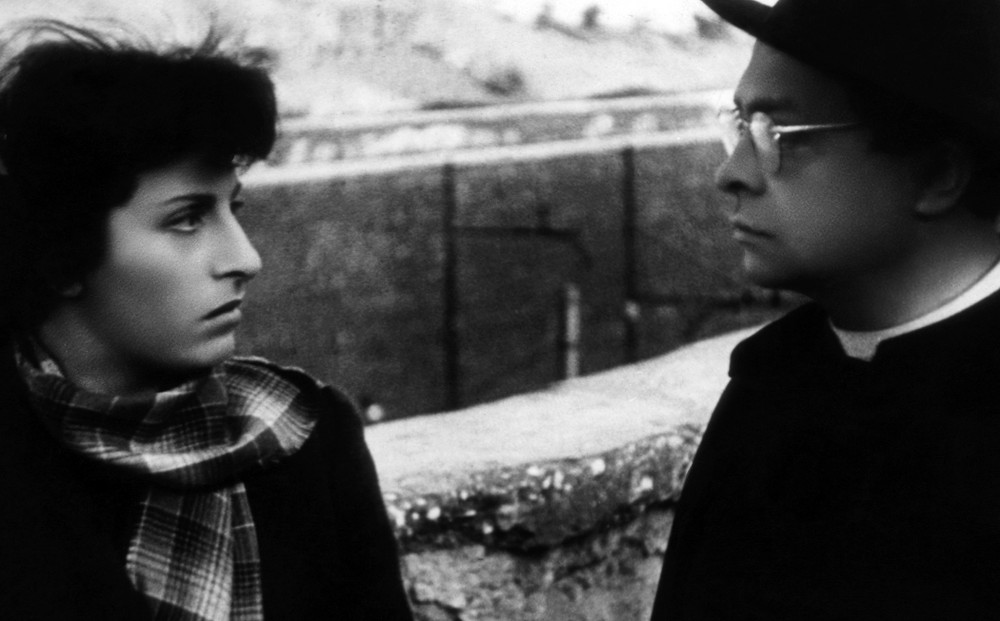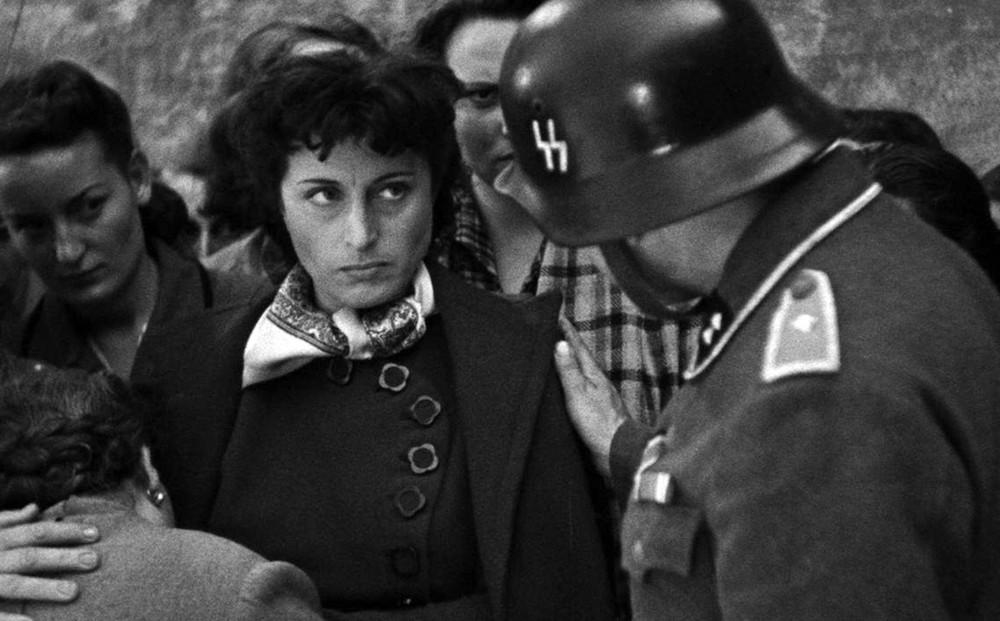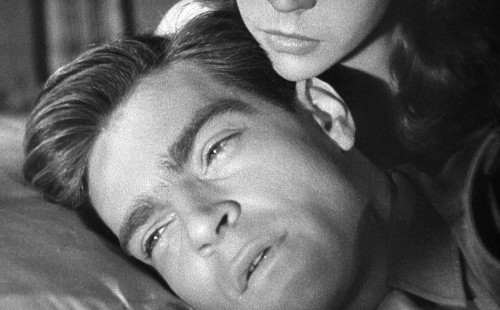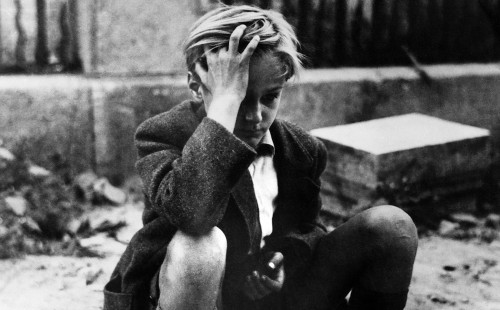Roberto Rossellini’s
ROME OPEN CITY
12:30 6:35
Thursday, May 2
(1945) Rome, winter 1944: as screeching-tired Gestapo dragnets blanket the “open city,” Resistance leader Marcello Pagliero escapes from his apartment by running across the rooftops (as did co-screenwriter Sergio Amidei in real life), as pregnant widow Anna Magnani prepares for her wedding, parish priest Also Fabrizi uses the “frying pan method” to hide the local boys’ bomb brigade hardware, and effete Major Harry Feist riffles through his collection of incriminating ID photos – but betrayal, a broad-daylight machine-gunning, a partisan ambush, blowtorch torture, and death by firing squad loom… Based on actual people and all-too-recent incidents (Magnani’s electrifying final scene was inspired by her enraged pursuit of her boyfriend’s escape by truck); written in a week in Federico Fellini’s kitchen (the only place with heat); shot on a number of the real locations, and cast mainly with non-pros (Fabrizi and second-choice Magnani were already famous, albeit for comedy), Open City’s documentary look and still hair-raising violence rocked audiences and critics around the world, making Neo-Realism, Rossellini, and Magnani world-famous, sharing the top prize at Cannes, and running twenty-one consecutive months at a single New York cinema. DCP. Approx. 103 min.
Part of Roberto Rossellini’s War Trilogy.
Reviews
“The fame of Rossellini’s brutal, melodramatic account of the underground resistance to the Nazi occupation rest on its extraordinary immediacy and its rough, documentary look; at its most startling, it seems ‘caught’ rather than staged. Many Americans, used to slick war films, reacted to it as if it actually were caught… The movie gave us a cross-section of a city under terrible stress.”
– Pauline Kael
“Rossellini’s Neo-Realism masterpiece… It scarcely matters how many times you watch it… The story plays like a gripping thriller: a cat-and-mouse game between Gestapo and resistance cell.”
– Cath Clarke, The Guardian
“Still a picture of unrivaled immediacy and passion… memorably preserved a place and a time – and taught generations of filmmakers how to preserve theirs.”
– Michael Wilmington




